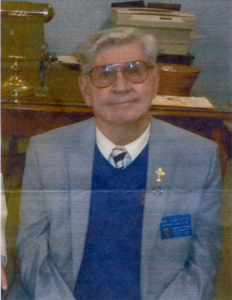The following are the words of Gabrielle F. Culmer, Archway Publishing author of “Where Lives Lead”, “Glenely Bay and Nostalgia from Paris”, and “Arrive by Dusk.” For more on the author, visit her website, Facebook, and Twitter. Download the Archway Publishing free publishing guide for more information on our supported self-publishing services.
Write What You Know
 I was once told when studying for my “O” levels in high school to write about what I knew because it was my strong point. Since my early years consisted of scenic marine views, they usually have been a topic in my novels. I always concentrate on the aquamarine colors, the temperature of the water, its texture, the sensation of diving into the water and how it motivates my characters. My characters have a focal point where the topics arise from the scenery.
I was once told when studying for my “O” levels in high school to write about what I knew because it was my strong point. Since my early years consisted of scenic marine views, they usually have been a topic in my novels. I always concentrate on the aquamarine colors, the temperature of the water, its texture, the sensation of diving into the water and how it motivates my characters. My characters have a focal point where the topics arise from the scenery.
Turning Reality into Fiction
 I use this practice now for much that I write about and can extract topics from everyday life. If I am in a particular city to which I am accustomed, naturally it would present some element in my stories. It takes technique to turn this reality into fiction and have it removed to the third person of my character. How a character may feel would not necessarily be my point of view. It is important to both disassociate from myself to appreciate the character and delve into the imagination of how that character would react in reality. It is about their perspective and a different point of view.
I use this practice now for much that I write about and can extract topics from everyday life. If I am in a particular city to which I am accustomed, naturally it would present some element in my stories. It takes technique to turn this reality into fiction and have it removed to the third person of my character. How a character may feel would not necessarily be my point of view. It is important to both disassociate from myself to appreciate the character and delve into the imagination of how that character would react in reality. It is about their perspective and a different point of view.
The character’s point of view may be distinct from the writer and may not be a normal reaction; it should be respected. The character may be disliked because their life may appear too perfect or they may be unpopular. Whatever the situation, I try to make them more coherent to the reader and describe how they perceive their situation. The characters are usually complex and have some underlying issues beneath a perfect surface that may cause friction. Often, my characters can inspire others who may be facing a particular issue, or be overcoming a loss. The character’s personality nuances may be a subtle point which may go unnoticed to the reader at first, and then evolves, and is revisited.
I relish visiting parts of a town where a character may inhabit, or a theme in the novel, or a place I appreciate. I may imagine how a character may react in a very uncomfortable and unknown environment, or in a familiar setting.
“Where Lives Lead”, emphasizes family and career and is the continuation of the story-line of “Arrive by Dusk.” The story was still untold and I wanted to delve into the character’s new lifestyle as a married couple as well as add new characters and interests.
A Little About My Characters

The new character of the writer, Genevieve, shows a writer’s point of view in contrast to the other characters. There are also new characters in the form of film actors who also provide a new and interesting perspective. Whereas, Harriett strives for the reconciliation between theater, family, and reality. However, Mindy is an inspiring and constant figure who is a landscape artist as well as the main character. Blaine, her husband, may be viewed as successful, complex, and dutiful. The story is inspired by the notion that you can fulfill your dreams with dedication. It depicts the fast-paced NY life and the contrasting scenic and languid beach resort lifestyle. The central theme of the balance of career and family explores whether or not it is possible to have both, and is applicable to many people.
Archway Publishing is always looking for content for its blog. If you’re an Archway Publishing author and would like to share a guest blog post, please visit our Blog Guidelines Page.












